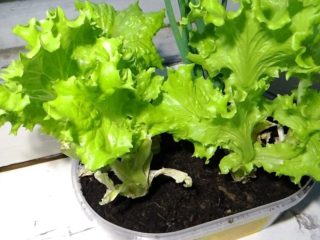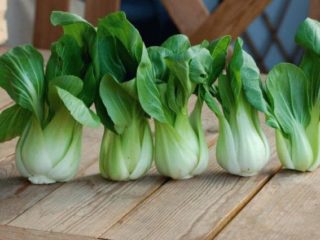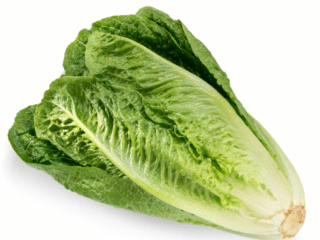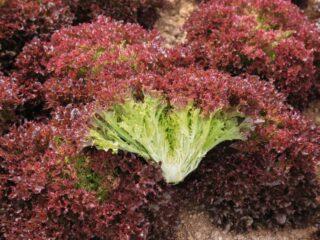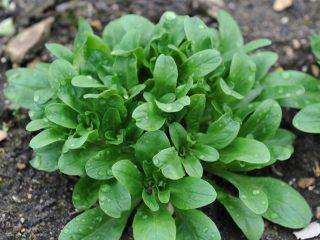Content
Chicory lettuce is one of the representatives of rosette plants, which has been known to man since the times of the Ancient Roman Empire. Its species are mentioned in the works of Quintus Horace, as well as in Renaissance herbalists. In Russia, endive salads are not very common, and there are few types of them on the market, while in European cooking the green crop is used with pleasure.
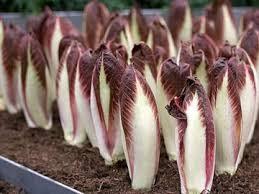
Chicory salad is a storehouse of vitamins and minerals
Description and types of endive salad
Chicory salads are members of the Asteraceae family of the same genus. Today there is a lot of confusion with the exact description of the species, since in the cooking of different countries they are presented under their own names.
If we describe endive salads according to general botanical characteristics, then they include three forms of the same species that form a powerful rosette of leaves - these are Escarole (Cichorium endivia latifolia), Endive (Cichorium endivia crispa) and Witloof (Cichorium intybus), which belongs to the same species, as well as wild chicory.
Endive and Escarole are biennial plants that are grown as annuals for food purposes. They are sold under the names Frize and Scarola. Witloof is a perennial plant that is cultivated as a biennial plant for forcing bleached heads of cabbage.
In appearance, endive salads resemble leaf and head lettuce, and some varieties are even similar to Chinese and red cabbage. Endive has curly, lacy leaves that have a richer flavor with a piquant bitterness. Escarole has a powerful rosette, assembled from numerous large fleshy leaves with a pronounced central vein. Witloof also has large leaf blades that form a dense rosette.
Benefits of endive salad
Chicory salad has a unique composition. Vitamins and microelements together have a multifaceted effect on the human body and its life support systems.
Chicory salad is rich in vitamin A, which is important for vision. In addition, it helps in the production of collagen, which improves the condition of the skin. The plant contains most of the B vitamins necessary for the functioning of the central nervous system. After all, they help normalize sleep and help fight stress. Also, B vitamins are directly involved in metabolic processes and are beneficial for muscle tissue.
Endive salad is especially valued due to its inulin content, which normalizes blood sugar levels. This is important for overweight people and beneficial for people suffering from diabetes.And intibin takes care of the gastrointestinal tract, gall bladder and liver.
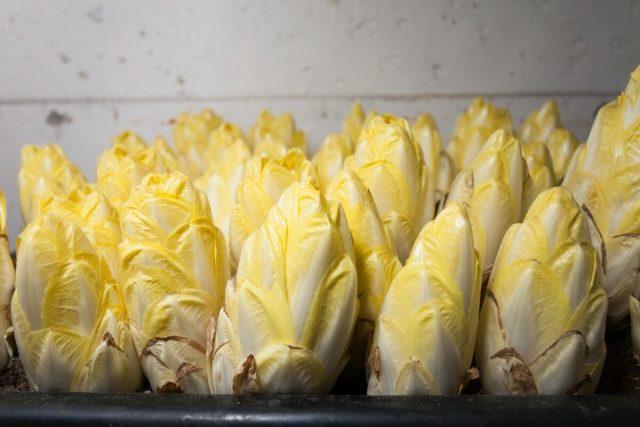
The presence of potassium, magnesium and manganese has a beneficial effect on the functioning of the cardiovascular and circulatory systems
Thanks to its high dietary fiber content, endive salad gently relieves constipation. It normalizes the functioning of the digestive system and gives a feeling of fullness for a longer time.
Harm and contraindications
There are no special instructions for consuming endive salad, as well as reliable data on the dangers of the vegetable crop. The only contraindication may be individual intolerance, which can lead to allergic reactions or intestinal upset.
Sowing time
Chicory lettuce is grown in two ways: directly in the open ground and by seedlings. Therefore, planting times vary significantly:
- sowing seeds in open ground is carried out from mid-April to the end of May (the soil must be warmed up to 7 ºC);
- Seeds for seedlings begin to be sown at the end of February to the beginning of May.
How to grow endive lettuce
Since sowing seeds can be done both in open ground and for seedlings, the methods of growing chicory lettuce have their own differences. For the rest, it is enough to carry out ordinary agrotechnical measures.
Site selection
Like all garden plants, endive lettuce has its own requirements for the planting site. To get a good harvest, the following factors must be taken into account:
- It is advisable to place crops in a well-lit area without draft winds;
- The plant is not picky about soil, but it is better that the soil is loose with sufficient nutrients (neutral acidity);
- In order for the harvest to be a success, it is best to plant chicory salad in a place where cucumbers, cabbage or legumes grew (unfavorable predecessors are lettuce, parsley, potatoes and carrots).
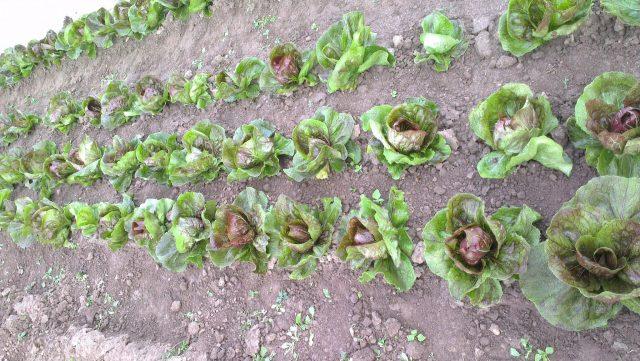
The agricultural technology of sowing and cultivating chicory lettuce in open ground is somewhat similar to growing carrots
Planting in open ground
To sow chicory lettuce directly in open ground, the place is prepared in advance. They dig up the area while simultaneously applying fertilizers. Then grooves are made with a depth of up to 1.5 cm. The pattern can be followed with a row spacing of 35-40 cm, and also in the form of a two-lane pattern - when 20 cm are left between the stripes in a row, and the row spacing is 40 cm.
The grooves are moisturized. The seeds are sown and lightly sprinkled with sand. If necessary, you can cover the crops with film. The first shoots should appear on the seventh day.
Growing seedlings
Sowing seeds for seedlings is carried out in boxes or separate containers (peat cups). Before filling the container with soil, be sure to check for holes in the bottom, then lay a drainage layer. Fill the soil and moisten it. If a common box is used for sowing, then make grooves in two rows and place the seeds in them, sprinkle with sand. Place 1-2 seeds in separate cups.
Containers with crops are placed in a well-lit room with a temperature of no more than 10 ºC. In such conditions, sprouts should appear within a week.
Before planting in open ground, seedlings begin to harden two weeks in advance, taking them outside every day with a gradual increase in time. Seedlings are transplanted at the age of one month.
Rules of care
Caring for chicory salad is as follows:
- watering is provided regularly depending on weather conditions; lack of moisture leads to coarsening of the leaves and the appearance of strong bitterness;
- loosening and removal of weeds is carried out 3-4 times during the entire growing season, this is done after watering;
- chicory salad practically does not need fertilizing if the soil is nutritious, but it is recommended to add a nitrophoska solution at the beginning of August.
Cleaning and storage
Three weeks before harvesting endive lettuce, it is necessary to bleach the rosettes to minimize bitterness. To do this, the leaves located at the base are collected and their tops are tied, as if hiding the rosette inside. The plantings are also covered with agrofibre to minimize exposure to sunlight. In the early morning, the shelter is opened slightly for ventilation, and it is completely removed immediately before harvesting.
Chicory lettuce begins to be harvested from the beds at the end of September. This is done in dry weather using a garden fork. Digging must be done carefully, avoiding damage to the root system. Then the soil is shaken off the plants and left to dry for a week. The leaf part is cut off, leaving about 3 cm, and sorted by length.This is necessary so that you don’t have to do a lot of pruning before forcing, since they are at the same level when planted.
Prepared root vegetables are placed in boxes and sprinkled with peat, sand or sawdust. Then they are sent to the cellar for storage.
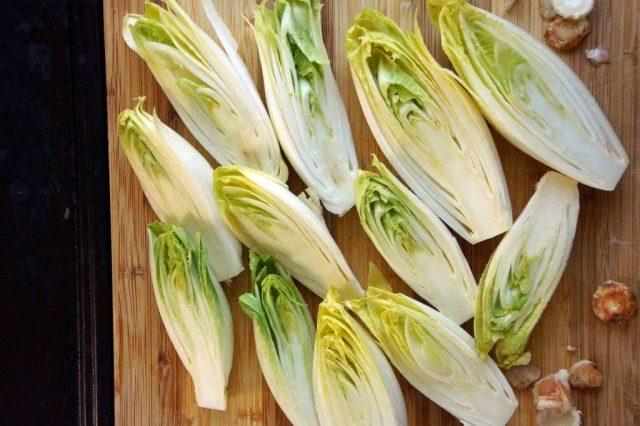
Once cut, endive lettuce leaves can be stored in the refrigerator for up to three weeks.
Conclusion
Chicory lettuce is a very useful plant, the types of which are used in different ways. Endive and escarole leaves can be consumed by cutting directly from the garden bed, but witloof is grown in the summer for subsequent winter forcing.
